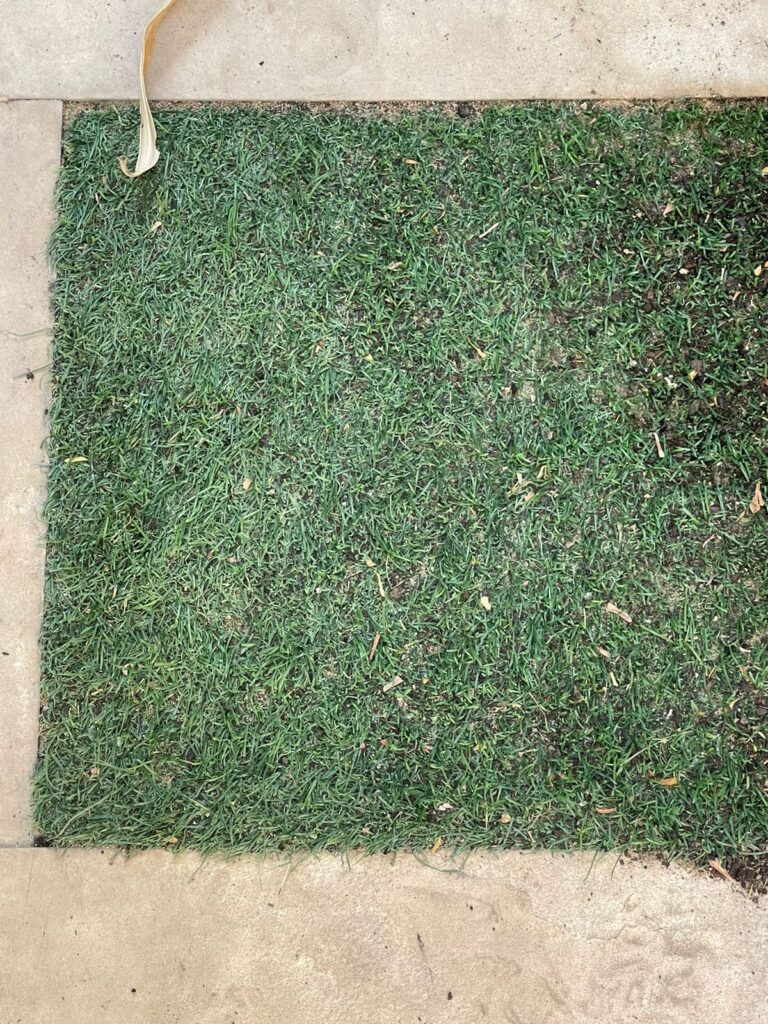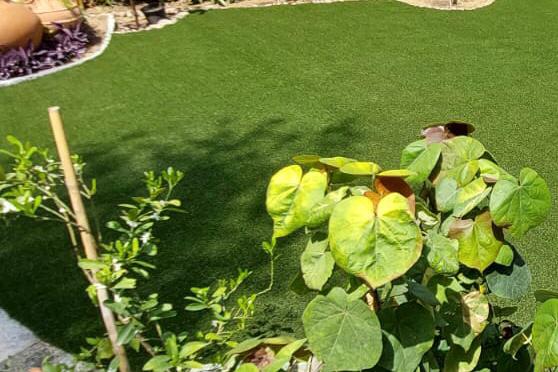Artificial turf has long been mooted as the answer to having a lush lawn using very little water. However, it has its own problems. First, let us understand what artificial turf is made of:
Artificial turf is made up of three major parts:
1. Backing material that will serve to hold the individual blades of artificial grass
2. The plastic blades themselves.
3. The infill, those tiny black crumbs, that help support the blades.
Artificial turf detractors say that it is generally bad, causes cancer, and has lead in it. They say that it consists of plastic and is toxic. Until recently all these arguments held true 100%. The newest innovations in artificial turf prove otherwise.
The infill is the most toxic part as it used to be made of recycled tires, which contained lead. This of course is very toxic to humans and animals alike. The good news is that there are other materials being used as an infill now, including sand, quartz, and crushed stone which of course are not harmful to living beings to that extent. The other part is the blades which are made of plastic. They heat up terribly and cause burns and raise the general temperature around. They also fade with time when exposed to high and very high temperatures. Again, newer technologies are solving this problem and the recent products are UV coated and do not smell so plasticky.
The first big question you will ask when laying the turf is what is it you want to do with the lawn? Artificial turf does not feel like real grass. It does not have health benefits like natural grass, and it does not support biodiversity like natural grass. But if you are willing to research and put down a large amount of money in the beginning to buy expensive artificial turf and to get it laid properly you will probably enjoy the long-term benefits of less watering, less maintenance, and a year-round lush look.
Our resident expert Buvana Raman explains the process. She chose her supplier after 8 months of research and her choice did not come cheap. She explains as follows:
First, the outline or border is marked. Then they dig and take out 10 cm sand. They then bring a mechanical roller and even out the area. Then a landscaping or membrane cloth is laid out (not all suppliers do this so check for this. It is essential as you will see). Then small black pebbles are laid about 5 cms in height and again the mechanical roller is used.
Then they lay the grass. The grass pieces are fixed with clips as well as with glue and they are contoured so that the directionality is uniform.
This membrane cloth allows water and rain to drain – so if an animal pees, etc you can easily wash it without an issue. But at the same time, it will not allow grass or weeds to grow out from the turf. They also brush with silica in the end. The membrane cloth is fire retardant, and the grass is UV coated so that it absorbs less heat and therefore radiates less heat around unlike cheaper varieties. For a good quality artificial turf and a professional job that lays out the grass well, you will have to pay around 150 aed+ per square meter.

Most issues that come with artificial turf are because the product is cheap, and it is not laid out properly. Therefore, ask all these questions and be prepared to shell out a fairly large sum of money.

Here is an interesting resource that gives you the pros and cons of artificial turf. https://www.lazylawn.co.uk/blog/pros-cons-of-artificial-grass/
While this is from an Astro-turf manufacturer and installer they do make some good points.
Another link here focuses on the problems with artificial turf. Most are preventable if you research and go with a reputed supplier. So this is a good resource to read up on before you contact suppliers so that you have the right questions for them.
As a tongue in cheek aside, ladies wearing heels to your party will appreciate the artificial turf as their sandals will not sink into the ground.
Finally, you need to make the decision, about whether you want natural or artificial grass depending on your resources and time. I love my natural grass and it might be a while before I decide to switch.







Recent Comments